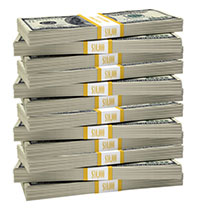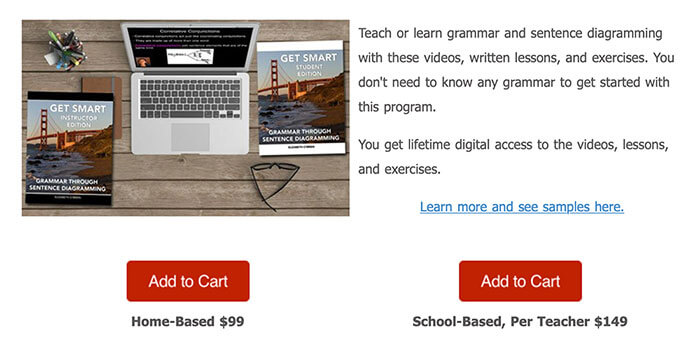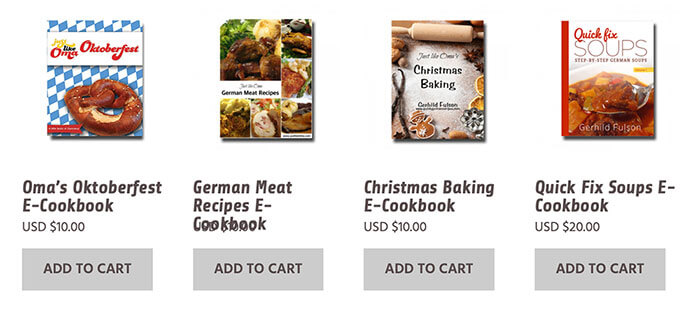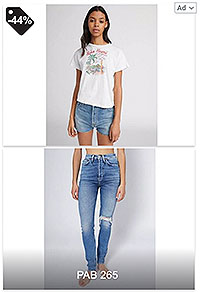
Struggling with how to make money blogging (or wondering if it’s even possible)?
You’re not alone. Many bloggers start writing without a plan — before they think about how their hard work will pay off.
But while you’ve been mastering the basics of blogging, we’ve been helping thousands just like you build a profitable online business.
When it comes to making money from your blog, keep this quotation in your back pocket:
“Begin with the End in Mind”Stephen Covey
When you start your blog, you should have a plan from day one to make money — unless you just want to keep it for fun. Bloggers who make “quit your day job” amounts of money plan for success right from the start.
Basically, your blog needs to be seen as authentic and credible to get folks to click on your affiliate links or order your products.
Let’s take a closer look at how successful bloggers make money from their sites and how you can too.
But Wait! I Already Have a Blog and It’s Not Making Money
If you’re wondering why you aren’t making money from your blog, take a look at your traffic statistics. If your daily visitors and pageviews are less than 1,000, that could be why you aren’t earning money.
If your blog gets 50 visitors a day, your chances of making money are way lower than a blog with 50,000 visitors.
Your primary focus at this stage should be growing your audience. We’ve got you covered in this guide with lots of ways to promote your website and increase traffic.
If your blog is already doing well, it’s time to join the club of income-generating blogs.
How Do Bloggers Make Money?
 Bloggers can make a part-time income or full-time living with a variety of strategies. They generally fall into two categories:
Bloggers can make a part-time income or full-time living with a variety of strategies. They generally fall into two categories:
Passive monetization and active monetization.
Passive monetization is best likened to “set & forget.” You do it once (with some tracking and maintenance), then let it work in the background to generate passive income.
For example, bloggers can make passive income by:
- joining an affiliate marketing program
- displaying ads on their blog with Google AdSense
For now, think of passive monetization as something you set up once, and the rest takes care of itself.
Active monetization means you’re going to be doing something to earn money, and using your blog to attract customers.
For example, you can make money online actively by:
- offering coaching services
- selling physical products
- providing professional services
So, which method should you choose: passive income or a more active strategy?
Most bloggers start with passive monetization. If your blog is a part-time venture, then passive monetization is a great way to make money without a lot of ongoing work.
It’s an easy way (okay, easier — earning money from a blog is never “easy”) to earn income while your blog continues to attract new readers.
Saving passively earned income enables you to fund plans for bigger projects. For instance, the money you earned from affiliate marketing or displaying ads could be used to create products — without dipping into personal savings.

Bloggers often start integrating active monetization when they’re ready to quit their day job and focus full-time on their blog. If you have the time now, though, go for it!
Think about your motivation, budget, and time constraints as you consider ways to start generating income. Whether you decide to start with a passive or active strategy, these examples will give you plenty of ideas.
11 Ways to Make Money Blogging
 Once you have high traffic, making money from your blog becomes a little bit easier — but that’s no reason to wait. While you’re working on building your audience, experiment with different monetization strategies.
Once you have high traffic, making money from your blog becomes a little bit easier — but that’s no reason to wait. While you’re working on building your audience, experiment with different monetization strategies.
Not only will this help you learn what your readers respond to, but over time, you’ll develop multiple streams of income.
Read on for 11 ways to make money blogging, including the pros and cons of each method.
And you can be sure that these strategies work — each one comes with a verifiable example of a successful blogger using Solo Build It! to earn revenue.
1. Selling Services
When it comes to selling services, your blog is a calling card. It needs to offer value in its own right (by providing lots of in-demand and helpful blog posts), but the underlying message should come across loud and clear:
Hire me, I’m good.
So if you’re wondering how to make money blogging, start by looking at valuable services you can offer. Then create a blog to establish your expertise and promote your services.
Heidi Holvoet from baby-sleep-advice.com has a Ph.D. and a fascination for sleep. Heidi shares tons of information about how to get your baby to sleep. From separation anxiety to colic and establishing a bedtime routine, Heidi covers it all.
In that process, she also demonstrates that she knows what she’s writing about. As a result, her personal sleep consultation service is fully booked.
Pros
- Your services can be super valuable for folks who sign up.
- Selling services through a blog can be lucrative.
Cons
- It’s time-consuming if you take on too many clients.
- You need to establish a lot of trust to make it a big success.
- You need a lot of traffic to get in front of enough people who would be interested.
2. Products
You can sell a variety of physical products on your blog. This variety is one of the major advantages for online shoppers — and your ability to reach a worldwide audience is a huge bonus for you.
The possibilities of what to sell in your new online store are limited only by your ability to either:
- make products of value to your readers
- source quality products that your visitors want to buy
Danny from VinylRecordMemories.com’s site is about vinyl records.
So, what does he sell? Yes, you guessed it, vinyl records. To make it a little more interesting, he sells his vinyl records framed and ready to be hung up on the wall. Shipping is free if you purchase two, to make the deal even sweeter.
Danny’s a big proponent of selling your own product. “I would have to sell nearly 1500 (song) downloads on Amazon to match my one sale of two albums.”
If buying a product and (literally) reframing it for your audience is something you aren’t into, how about creating totally new products to sell on your site?

Gerhild Fulson from Quick-German-Recipes.com decided that with her high organic traffic, coupled with 110,000+ Facebook fans and over 800,000 Pinterest views/month, it was finally time to create her own physical products to sell.
If you take a look at her online shop, you’ll see a wide variety of goods that folks interested in cooking want to buy.
From aprons to mugs and t-shirts, Gerhild has successfully created her own online store centered around her “brand of one.”
Pros
- It’s fun if you enjoy creating and designing.
- Provides an opportunity for your readers to engage further with your brand.
- Creating products is scalable — your imagination is the only limit.
Cons
- Quality control can be an issue if you use a drop-shipper.
- You need to learn the ins & outs of what you’re creating and how to create it.
3. Membership Site
Membership sites can be a lucrative source of recurring revenue. You can make money blogging by adding a members area to your website and providing premium resources to your subscribers.
Depending on the niche or topic, and the resources offered within the membership area (forums, personal access to industry professionals, free software applications, ebooks, daily updates, etc.), monthly access prices can range from $5.95 to $29.95 and up.
The word to note is “monthly” — as in “recurring revenues.” If you build up a large PREsold traffic base (you’ll learn how with Solo Build It!), you’ll convert a percentage of your visitors into members.
A recurring monetization model, such as a membership site, can reward you well.
Managing a successful membership site is not a “piece of cake” though. It’s a lot of work. Remember, the key to any product (but especially a membership site) is quality.
Andrew Smith and his Italian wife Maria run a site about Italy.
Recently, they started offering a membership service for folks who want an Italian vacation tailored to their needs.
“I went to Italy for the first time last month. Without your help I would never have discovered those little towns, that beautiful countryside near Venice and near Rome. Thanks to you guys I wasn’t a tourist and instead felt like a local. Trains, menus, everything – all a breeze. Thank you.”Testimonial on www.miomyitaly.com
By providing exclusive content, calming travel fears, and more, Mio My Italy’s subscription service has proven to be quite popular.
Pros
- Recurring monthly revenue will grow with each new member.
- You can leverage your existing knowledge to create new members-only content.
Cons
- Quality and depth need to be above and beyond. Each month a member must be able to say to herself, “the fee is peanuts compared to what I get from this membership site.”
- There’s a learning curve to creating an irresistible membership offer.
- You need to have really PREsold your traffic well to get readers to buy it.
4. Online Courses
First, decide what your online course will cover, then write the content. When you’re finished writing the course, divide it into logical chapters, and bingo, you have your first online course.
Online courses can suit any niche. For example, Jason Knight’s Alderleaf Wilderness College offers essential wilderness survival skills courses, both online and offline. Elizabeth O’Brien’s English Grammar Revolution helps people learn grammar through online courses.
After polling her readers, Elizabeth realized how much her audience wanted a grammar course. So, she decided to put away the TV remote and got cracking on creating online courses.

Find out more about how Elizabeth crossed the six-figure mark, due to her online courses.
Pros
- Online learning is a growing industry — people love learning at their own pace, without leaving home.
- You can increase earning potential with multiple courses.
- The work is mostly upfront — once you set up the course, you’re done.
Cons
- It takes time and effort to set up… but hey, if it were easy, everyone would do it.
- You need to be an expert in the topic to create a valuable course.
5. Printables
Printables are resources that your readers can download, print out, and use at home.
There’s a wide range of printable products you can create and sell. Here are just a few ideas:
- Calendars: for fitness tracking, baby sleep schedules, or workout plans
- Templates: for binder organizers, coupons, or menu planning
- Games: educational after-school activities or teaching aids
Crispin Pennington’s printables on Math Salamanders are worksheets based on elementary school math. He gives them away for free on Pinterest, but as a result, it drives a lot of traffic to his site — which adds to his Google AdSense income.
Whether you’re selling something useful, or giving it away for free as a lead generator on Pinterest, printables are a great way to expand your income and social media reach.
Pros
- Downloadable PDF files are easy to create, even if you’re not a graphic designer, with free tools like Canva.
- Printable downloads work well for almost any niche.
- They also make great lead magnets for growing your email list.
Cons
- A download needs to be a really valuable piece of content if you want to charge for it.
- Since the price point is lower than a physical product or service, you need to make higher sales — that means you need more traffic.
6. Ebooks
Ebooks continue to rise in popularity, and are a great way to make passive income. Since you’re already writing plenty of content for your blog, putting together an ebook is a natural progression to start making money from a blog.
The easiest ebook to create expands on your pre-existing content. Then package it up into an ebook, and sell it on your blog.
One of Gerhild Fulson’s best performing passive income methods is selling ebooks.
Her site is inspired by her German heritage and is focused on German recipes.
For Gerhild, compiling her recipes by types of food and holidays (Oktoberfest and Christmas) was simple to do — and profitable. Here’s how she made ebooks one of her top-performing ways to make money.

Pros
- You have complete control over the content of your books.
- It can be easy, if you start by repurposing material you’ve already written.
- You own all rights.
- Selling ebooks through your blog means you can reach your audience directly — without relying on a traditional publisher.
- Selling ebooks is scalable as you grow your audience.
Cons
- If you use a service like Amazon’s Kindle Store, you will have to pay 10% to 30% of the selling price (sometimes more).
- Formatting can be tricky to figure it out, but once you do, it’s clear sailing.
7. Apps
If your niche is suited for an app, go ahead and do it.
You can get as creative as you want with an app for your blog.
Nori from Anguilla-Beaches.com created an app for tourists to use. The app includes a map of Anguilla, and event listings like live music that tourists or even locals want to know about.
A better example of using an app to make money, would be Luke Barber’s site about speech therapy for kids. When he noticed that some of his top-performing pages were about pronunciation, the idea was easy: a flashcards app.
Partnering with a developer to code the flashcard pronunciation apps, they now make up 50-75% of his income.
If you want more information, catch Luke’s interview below.
Pros
- Apps are fun to create and super useful for your readers.
- Once you set it up, your sales are only limited by your marketing efforts.
Cons
- You’ll need to find iOS and Android developers — unless you are one yourself!
- Takes time to sketch out your idea and develop it.
- Development costs can be high.
8. Site Sponsorship
 Sponsors give you money to support the running of your business. In exchange, you promote the sponsor with a banner on your website, linking to a full-page write-up about the sponsor. There’s little difference between the look of a regular display ad and a sponsorship ad.
Sponsors give you money to support the running of your business. In exchange, you promote the sponsor with a banner on your website, linking to a full-page write-up about the sponsor. There’s little difference between the look of a regular display ad and a sponsorship ad.
Creating a sponsorship program is a great way to serve your readers and your sponsor.
Nori Evoy’s blog, anguilla-beaches.com, monetizes by offering sponsorships to businesses on Anguilla.
On an island that relies on tourism, her sponsors gain a lot from being on every single page of her site. For tourists reading her blog, they also gain from being exposed to businesses that they may have missed otherwise.
Pros
- Benefits your readers, if you can offer exclusive discounts or coupons in partnership with sponsors.
- If you can sign sponsors to six or twelve-month contracts, it’s a recurring and steady source of revenue.
Cons
- It’s time-consuming to create relationships with businesses (emailing, calling, in-person visits).
- You need enough traffic that potential sponsors would be hard-pressed to say no (for example, you get 100,000 pageviews/month).
9. Lead Generation
Most people begin their lead-generating program with a system similar to affiliate marketing. For example, when you refer a reader over to another business (that you trust and would use yourself), you get paid.
If you want a passive solution for how to make money blogging, lead generating could be for you. All you have to do is make the referral — you don’t have to deal with product sales or providing services.
There are a few different payment arrangements for lead generation:
- Pay-per-Lead: The company pays you for each qualified lead from your blog (readers who sign up to be contacted by the company).
- Pay-per-Click: You get paid for each time someone clicks the link on your blog.
- Pay-by-Month: When you refer someone who signs up for a service, you get a percentage of the recurring fee each month.
Regardless of where you’re at with this strategy, long-term success depends on good management. And good management begins with accurate, transparent reporting to the companies you’re working with.
Arthur from InjuryClaimCoach.com makes money from his blog by providing a form for visitors to fill out, which is sent to local attorneys.
Arthur’s system is robust and distributes the leads automatically. You can find out more about it here.
Pros
- You don’t have to provide the services — just refer customers to businesses that do.
- You don’t need thousands of visitors to convert as long as it’s closely related to your niche.
Cons
- A lot of time is required for proper management in the beginning.
- It takes some effort to find companies who will pay for the leads your blog attracts.
10. Affiliate Marketing
Whether you’re a beginner or becoming a successful blogger, the easiest and fastest way to begin making money is through affiliate marketing.
As an affiliate marketer, you recommend products to your audience and receive a commission for each product your visitors buy through the links you provide.
It can be quite profitable if you find the best affiliate program for you and your audience.
On my own blog, newinspired.com, I write about fashion and review clothes I love.
In my reviews, I provide affiliate links for my readers to get the best deals. With an average affiliate check of $600 USD/month, it’s not a bad side hustle for me.
Pros
- It’s a great way to establish trust with your audience by recommending products that solve their problems.
- Once you’ve established a routine of writing and using affiliate links, it’s easy to scale your income.
Cons
- FTC regulations mean that you have to be explicit about explaining that you use affiliate links. However, if you PREsell readers on the products, they likely will not mind you earning money from their purchase.
- Some affiliate programs are harder to join than others.
Learn how to get started with affiliate marketing.
11. Display Ads
 Google AdSense is often the way bloggers make their first few dollars.
Google AdSense is often the way bloggers make their first few dollars.
In the last decade, more ad networks, like Ezoic or Mediavine, have emerged — and they pay more than AdSense.
Using these services can be profitable and easy to set up.
Vicky Danielsen’s knitting site now uses Mediavine and she’s singing its praises.
Pros
- The definition of passive income — set it up and forget it.
- Some programs are easy for beginners to join, but others require a traffic minimum.
- Pays a lot, but only if you have high traffic.
Cons
- If you don’t have a lot of traffic, earnings will be low.
- Going overboard with display ads can turn off readers.
Wrapping It Up
Making money from your blog will only happen once it has a lot of traffic, and that doesn’t magically happen overnight.
It takes real work to consistently create blog posts that get found on search engines.
And it takes even more work to create a voice and “brand of one” that readers trust.
But once you have your reader’s trust, earning real (and consistent) income is 100% possible — as you can see in the many examples we covered in this article.
If you’re looking for ways to gain a little extra traffic by promoting your blog, sign up for our checklist below!

Latest posts by Yuki Evoy (see all)
- Quit Your Day Job in 5 Steps: How I Did It - December 15, 2022
- How to Use AI for Your Blog: Artificial Intelligence 101 - November 10, 2022
- Why a Side Hustle is the New Job Security (And How to Start Yours) - July 26, 2022

